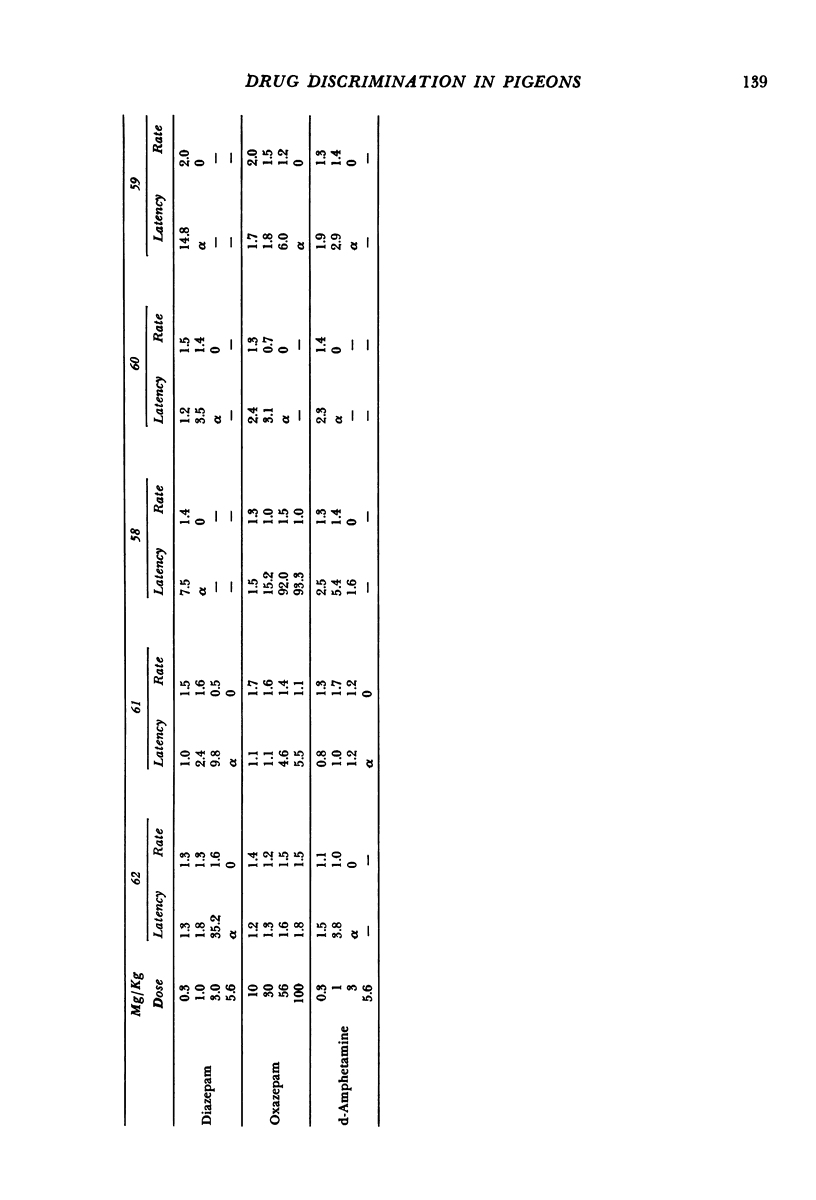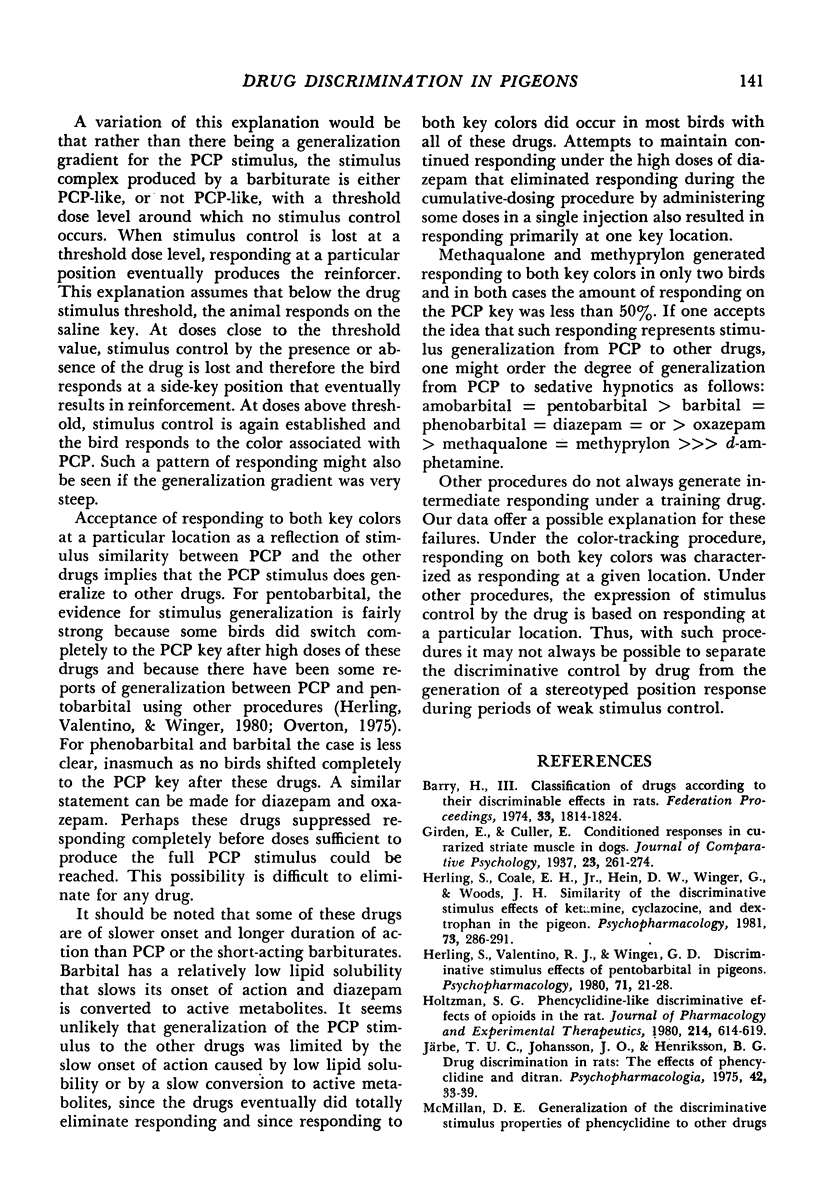Abstract
Pigeons were trained to peck the center key (lighted white) of three response keys to turn off the center keylight and to light one of the side keys with a red keylight and the other side key with a green keylight. Five responses (fixed-ratio component) on either side key relighted the center key. Food was delivered following 10 fixed-ratio components on the red key if 1.5 mg/kg phencyclidine had been given before the session. The position of the red and green keylights on the side keys varied randomly each time they were lighted by a peck on the center key. Subsequently, increasing doses of phencyclidine, barbital, amobarbital, phenobarbital, methaqualone, methyprylon, diazepam, oxazepam, and d-amphetamine were substituted for the training dose of phencyclidine, using a cumulative dosing procedure. At low doses of the sedative hypnotics, birds pecked the keylight color associated with saline. At higher doses, birds pecked both key colors. At the highest doses of pentobarbital and amobarbital, some birds responded almost exclusively On he color associated with phencyclidine. When responding on keys of both colors occurred following administration of phencyclidine or other sedative hypnotics, this responding was controlled by key position rather than by key color.
Full text
PDF









Selected References
These references are in PubMed. This may not be the complete list of references from this article.
- Barry H., 3rd Classification of drugs according to their discriminable effects in rats. Fed Proc. 1974 Jul;33(7):1814–1824. [PubMed] [Google Scholar]
- Herling S., Coale E. H., Jr, Hein D. W., Winger G., Woods J. H. Similarity of the discriminative stimulus effects of ketamine, cyclazocine, and dextrorphan in the pigeon. Psychopharmacology (Berl) 1981;73(3):286–291. doi: 10.1007/BF00422419. [DOI] [PubMed] [Google Scholar]
- Herling S., Valentino R. J., Winger G. D. Discriminative stimulus effects of pentobarbital in pigeons. Psychopharmacology (Berl) 1980;71(1):21–28. doi: 10.1007/BF00433247. [DOI] [PubMed] [Google Scholar]
- Holtzman S. G. Phencyclidine-like discriminative effects of opioids in the rat. J Pharmacol Exp Ther. 1980 Sep;214(3):614–619. [PubMed] [Google Scholar]
- Järbe T. U., Johansson J. O., Henriksson B. G. Drug discrimination in rats: the effects of phencyclidine and ditran. Psychopharmacologia. 1975 Apr 30;42(1):33–39. doi: 10.1007/BF00428822. [DOI] [PubMed] [Google Scholar]
- McMillan D. E., Cole-Fullenwider D. A., Hardwick W. C., Wenger G. R. Phencyclidine discrimination in the pigeon using color tracking under second-order schedule. J Exp Anal Behav. 1982 Jan;37(1):143–147. doi: 10.1901/jeab.1982.37-143. [DOI] [PMC free article] [PubMed] [Google Scholar]
- McMillan D. E. Effects of chemicals on delayed matching behavior in pigeons. II: tolerance to the effects of diazepam and cross tolerance to phencyclidine. Neurotoxicology. 1982 Jul;3(1):138–141. [PubMed] [Google Scholar]
- Overton D. A. A comparison of the discriminable CNS effects of ketamine, phencyclidine and pentobarbital. Arch Int Pharmacodyn Ther. 1975 Jun;215(2):180–189. [PubMed] [Google Scholar]
- Teal J. J., Holtzman S. G. Discriminative stimulus effects of cyclazocine in the rat. J Pharmacol Exp Ther. 1980 Mar;212(3):368–376. [PubMed] [Google Scholar]
- Weissman A., Milne G. M., Melvin L. S., Jr Cannabimimetic activity from CP-47,497, a derivative of 3-phenylcyclohexanol. J Pharmacol Exp Ther. 1982 Nov;223(2):516–523. [PubMed] [Google Scholar]


